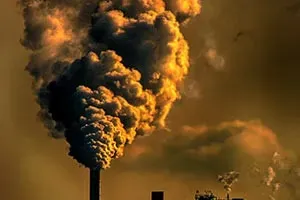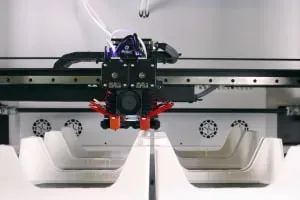
Diploma in AP Chemistry

Learn the ins and outs of AP Chemistry with this comprehensive online course. Dive deep into the physical states of matter and how they transition, understand stoichiometry and balanced chemical equations, and explore the concept of mixtures and pure substances. Discover the metric system and dimensional analysis, and gain a better understanding of atoms and their properties. Delve into chemical reactions, equilibrium, and redox reactions. Learn about thermodynamics, energy forms, and the classification of alkenes and alkynes. Perfect for those preparing for the AP Chemistry exams, this course is a must for any chemistry enthusiast. Sign up now for free!▼
Course Feature
![]() Cost:
Cost:
Free
![]() Provider:
Provider:
Alison
![]() Certificate:
Certificate:
No Information
![]() Language:
Language:
English
![]() Start Date:
Start Date:
Course Overview
❗The content presented here is sourced directly from Alison platform. For comprehensive course details, including enrollment information, simply click on the 'Go to class' link on our website.
Updated in [September 15th, 2023]
What does this course tell?
(Please note that the following overview content is from the original platform)
This free online course provides you with an in-depth understanding of the physical states of matter and how it can transition between different states. Before calculating the number of particles of a substance, it is important to understand stoichiometry and consideration of the balanced chemical equation. This course explores the concept of heterogeneous and homogeneous mixtures, including the types of pure substances. It introduces you to the concept of vapour pressure and Dalton’s law of partial pressure. Have you considered the process of dissolving sodium chloride (NaCl) in water? This course will teach you the metric system, dimensional analysis and the steps that are important for having successful dimensional analysis. You will also learn about the properties of materials based on the structure and shape of atoms, giving you a better understanding of the concept of nuclei, electrons, neutrons and protons.
If you want a detailed understanding of the dynamics of various chemical reactions, then you should sign up for this course. You will be able to explain how the mass of solid silver plus molality and molarity can be calculated. The material will help you understand the factors that affect vapour pressure, ideal gas law with examples of problems and their solutions. Explore how the rate of disappearance of reactants can be calculated. You will be taken through the effect of surface area as well as of concentration or pressure on reaction rate. Study the different ways of determining the rate law or the order of the reaction. Do you know there are factors that can affect equilibrium and the oxidation number of an element in a compound? This course explains the procedure for balancing redox reactions using the half-reaction or ion-electron. If you have any difficulty understanding chemical and nuclear reactions, including intermolecular forces, then this course is for you.
Furthermore, learn about the different factors that affect the reaction rate and how to use Gay-Lussac’s law for the calculation of change in pressure gas. You will be able to explain the temperature effects on solubility and the types of the covalent bond by electron sharing. This course will help you have a better understanding of the general concept of, and terminologies used in thermodynamics, as well as the different forms of energy. Do you know there are definite expressions of a system, surroundings, and boundary in thermodynamics? You will learn how to predict the spontaneity of redox reactions and the electrode process of values. Explore the driving forces of a chemical reaction, the definition of Gibbs free energy and the effect of standard state enthalpy. The course improves your understanding of the classification of the alkenes and alkynes. If you are considering taking the AP chemistry exams, this free online course provides great preparation and revision.
We consider the value of this course from multiple aspects, and finally summarize it for you from three aspects: personal skills, career development, and further study:
(Kindly be aware that our content is optimized by AI tools while also undergoing moderation carefully from our editorial staff.)
What skills and knowledge will you acquire during this course?
By taking this course, the student will acquire knowledge and skills in physical states of matter, stoichiometry, heterogeneous and homogeneous mixtures, vapour pressure, Dalton’s law of partial pressure, the metric system, dimensional analysis, properties of materials, nuclei, electrons, neutrons and protons, calculating the mass of solid silver, molality and molarity, factors that affect vapour pressure, ideal gas law, rate of disappearance of reactants, surface area and concentration or pressure on reaction rate, rate law or the order of the reaction, factors that affect equilibrium, oxidation number of an element in a compound, balancing redox reactions, Gay-Lussac’s law, temperature effects on solubility, covalent bond, thermodynamics, spontaneity of redox reactions, electrode process of values, driving forces of a chemical reaction, Gibbs free energy, standard state enthalpy, classification of alkenes and alkynes.
How does this course contribute to professional growth?
The Diploma in AP Chemistry course offers numerous opportunities for professional growth. By completing this course, individuals can gain an in-depth understanding of the physical states of matter and how they transition between different states. This knowledge is crucial for professionals working in fields such as chemical engineering, materials science, and pharmaceuticals, as it allows them to better comprehend the behavior and properties of various substances.
Additionally, the course covers important concepts such as stoichiometry, balanced chemical equations, and dimensional analysis. These skills are essential for professionals involved in laboratory work, research, and analysis, as they enable accurate calculations and measurements.
Furthermore, the course delves into topics such as heterogeneous and homogeneous mixtures, vapour pressure, and Dalton's law of partial pressure. Understanding these concepts is valuable for professionals working in areas such as environmental science, atmospheric chemistry, and industrial processes, as they deal with the behavior of gases and mixtures.
The course also explores chemical reactions, including factors that affect reaction rates and equilibrium. This knowledge is beneficial for professionals in fields such as chemical kinetics, catalysis, and process optimization, as it allows them to manipulate reaction conditions to achieve desired outcomes.
Moreover, the course covers thermodynamics, providing a better understanding of energy forms, spontaneity of reactions, and Gibbs free energy. This knowledge is valuable for professionals involved in energy production, chemical process design, and thermodynamic modeling.
Lastly, the course offers preparation and revision for the AP chemistry exams. This is particularly beneficial for students and professionals seeking to enhance their credentials and demonstrate their proficiency in chemistry.
Overall, the Diploma in AP Chemistry course contributes significantly to professional growth by providing a comprehensive understanding of various chemical concepts and their applications in different industries.
Is this course suitable for preparing further education?
Yes, this Diploma in AP Chemistry course is suitable for preparing further education. It provides an in-depth understanding of the physical states of matter and how it can transition between different states. It also introduces learners to the concept of vapour pressure and Dalton’s law of partial pressure, as well as the metric system, dimensional analysis, and the steps that are important for having successful dimensional analysis. Additionally, the course covers topics such as the process of dissolving sodium chloride (NaCl) in water, the properties of materials based on the structure and shape of atoms, the rate of disappearance of reactants, the effect of surface area and concentration or pressure on reaction rate, and the factors that affect equilibrium and the oxidation number of an element in a compound. It is a great resource for those who are considering taking the AP chemistry exams.
Course Provider





